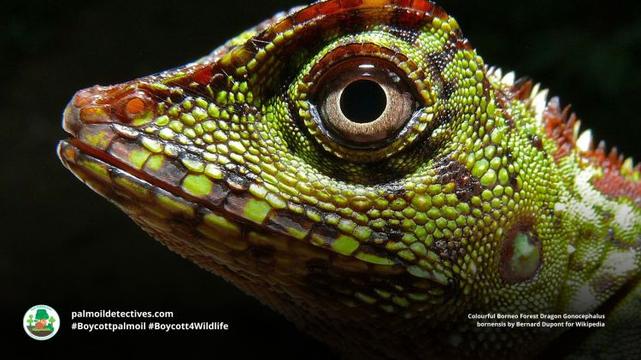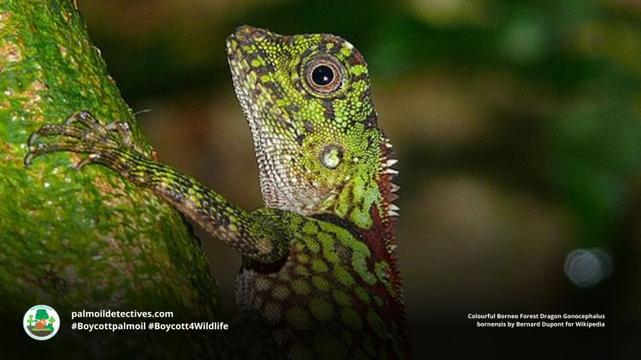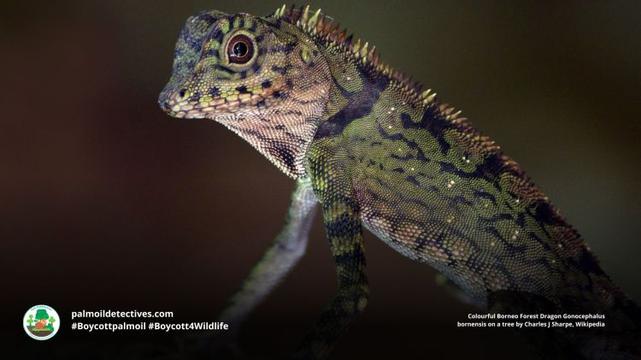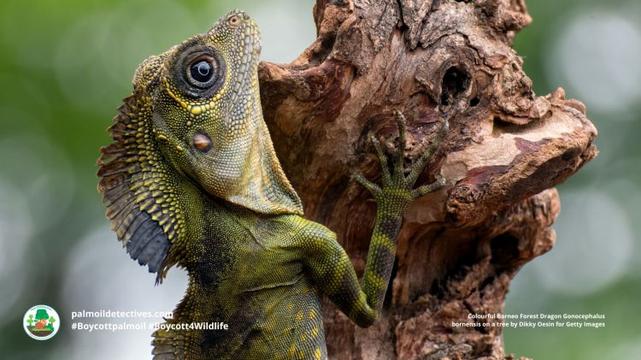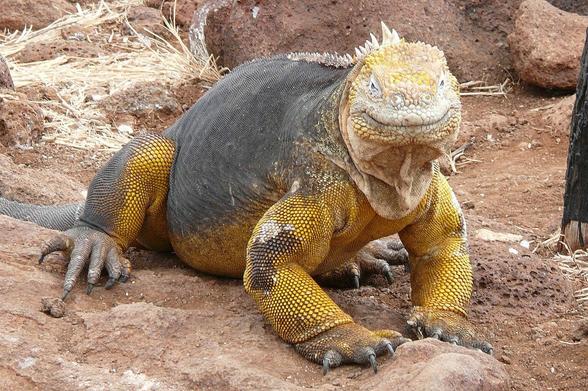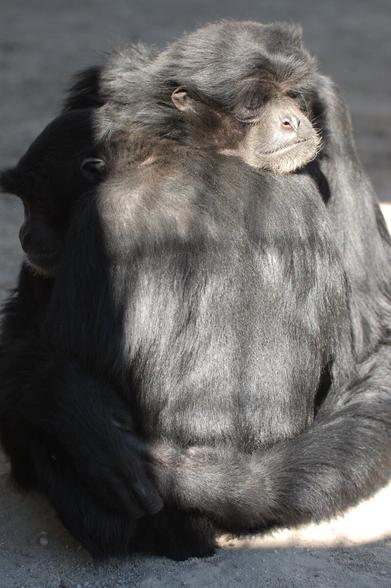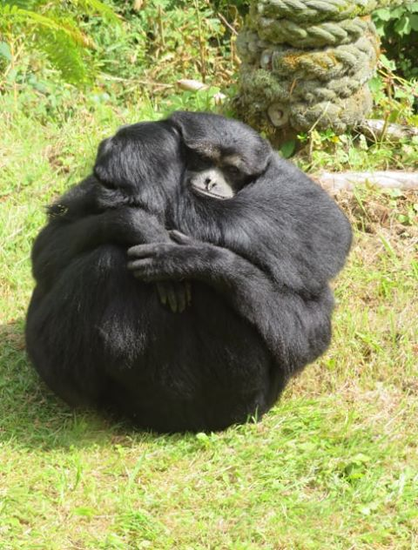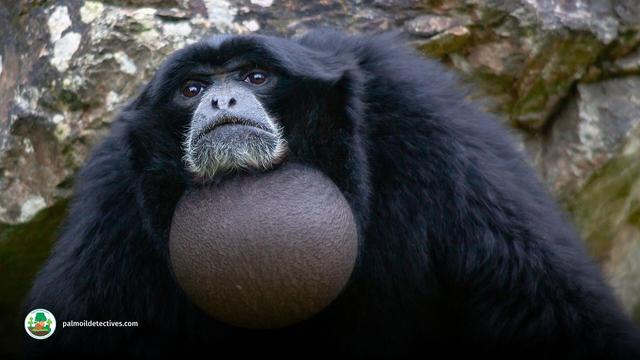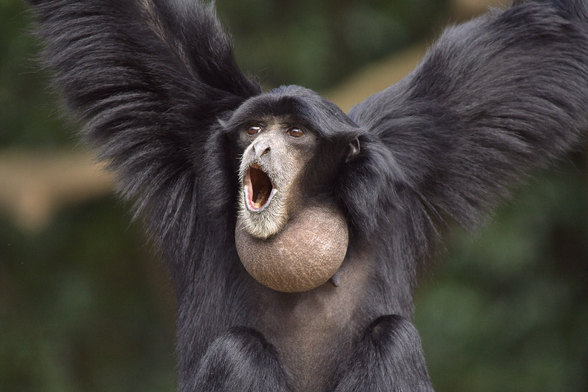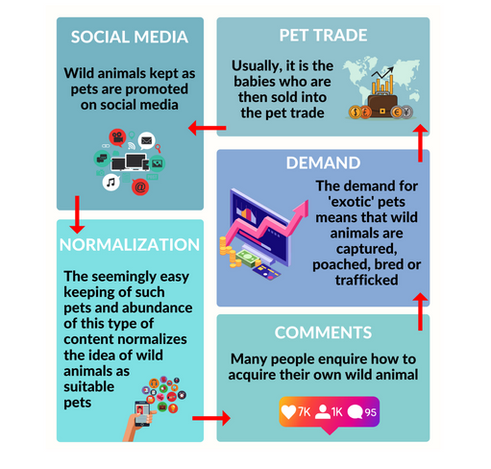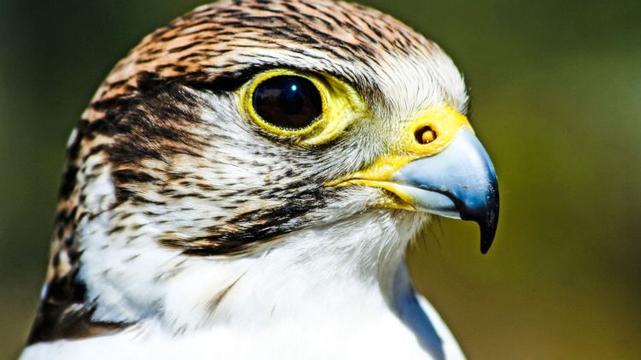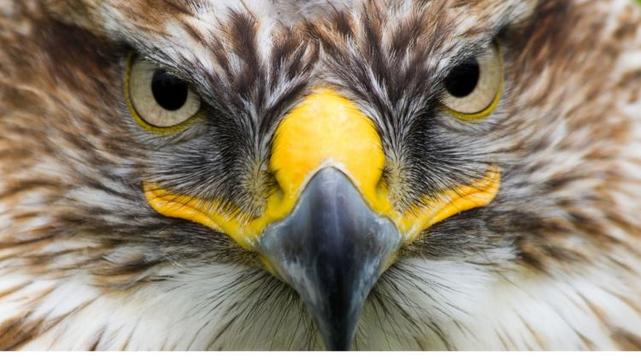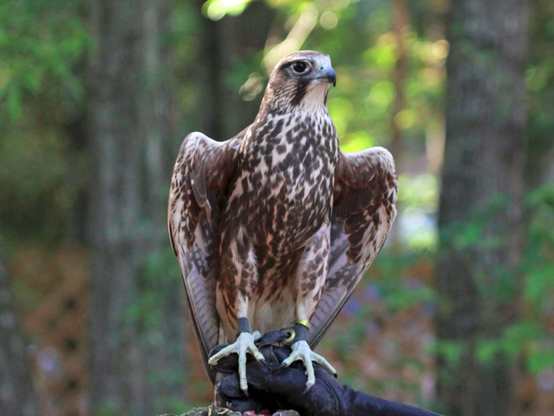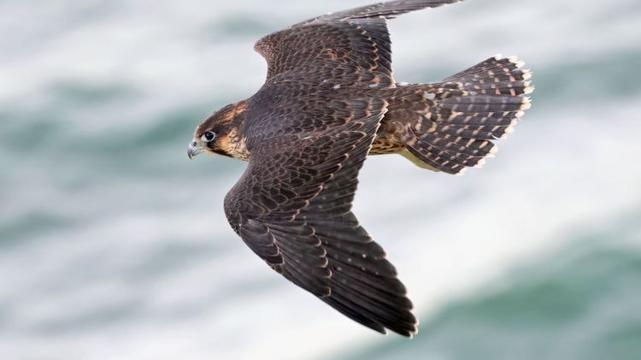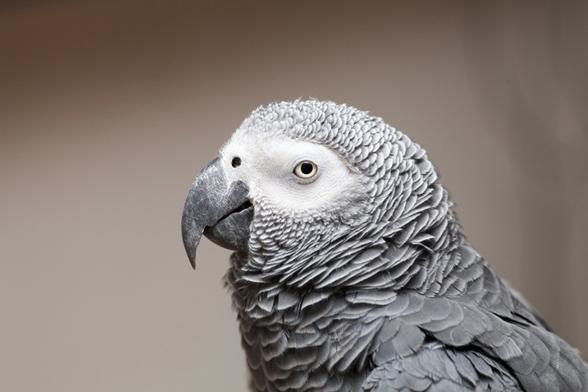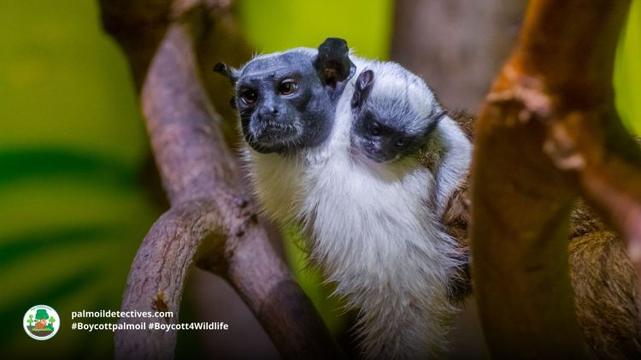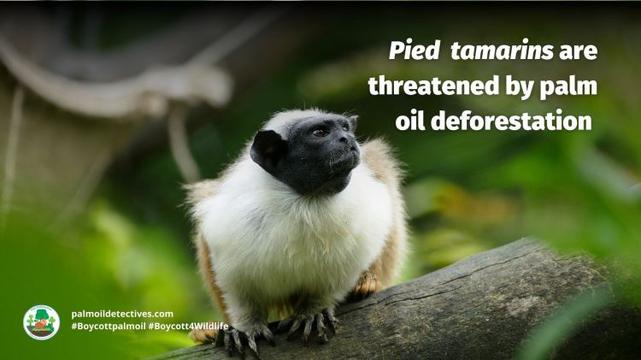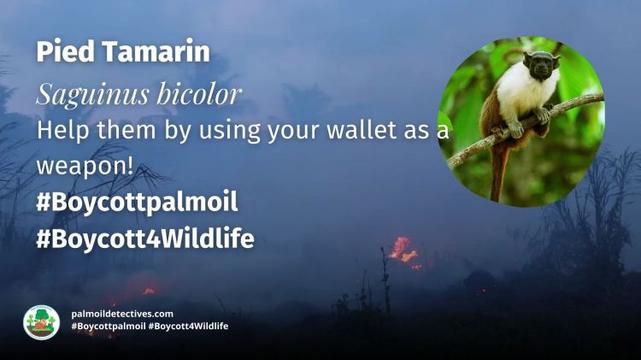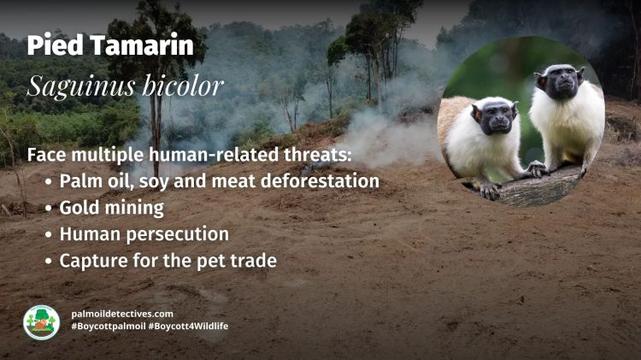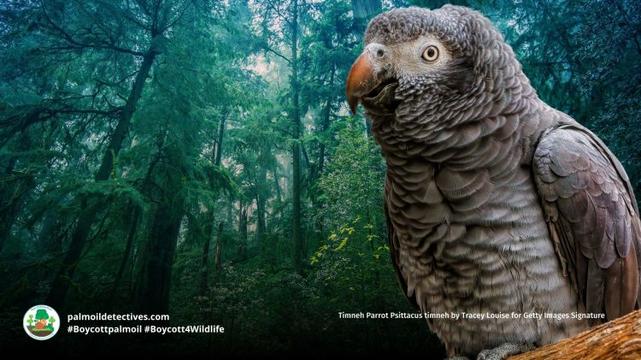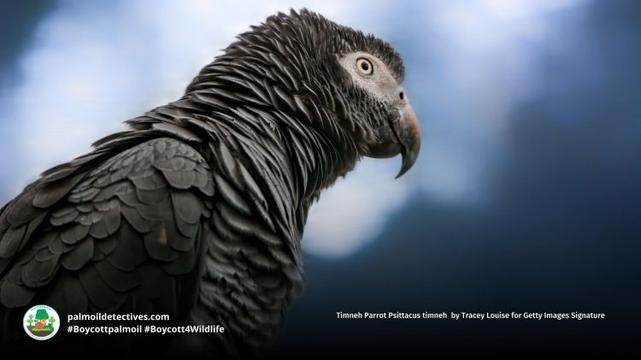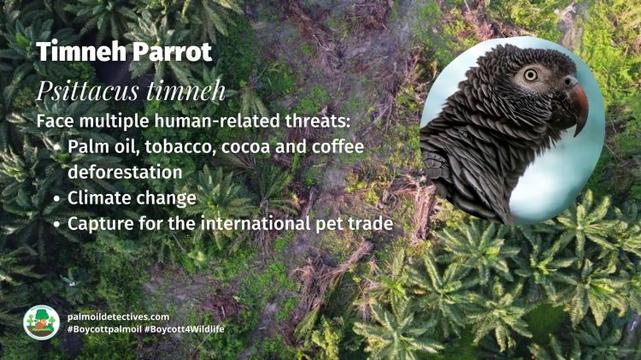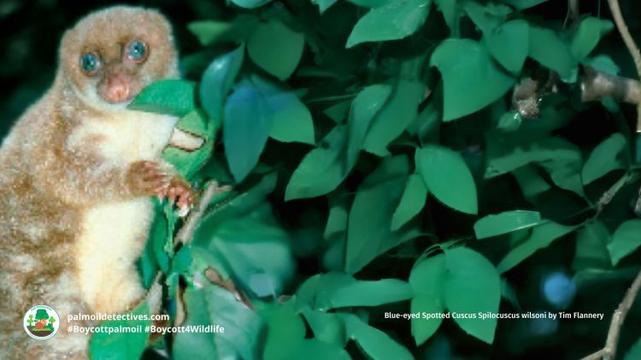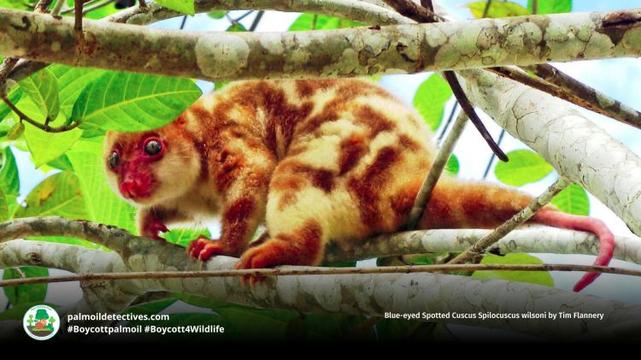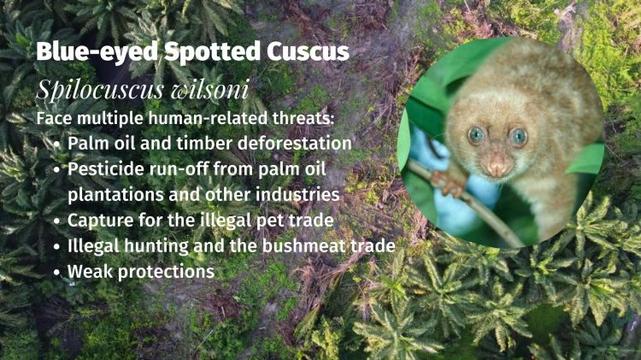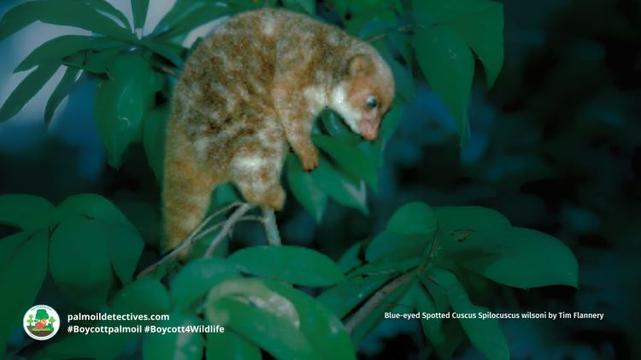Cheeky Crested #Capuchins are gregarious tool-using #monkeys, #endangered in #Brazil 🇧🇷 from #palmoil 🌴⛔️ meat 🥩🐮⛔️ and soy #deforestation and the illegal #pettrade 🏹 Help save them, when you shop #BoycottPalmOil #Boycott4Wildlife @palmoildetect.bsky.social https://palmoildetectives.com/2021/06/12/crested-capuchin-sapajus-robustus/?utm_source=mastodon&utm_medium=Palm+Oil+Detectives&utm_campaign=publer
#petTrade
As of 2009, the IUCN recognises 19 species of #parrot as #extinct since 1500 (the date used to denote modern extinctions). This does not include species like the New Caledonian lorikeet, which has not been officially seen for 100 years, yet is still listed as critically #endangered.
https://en.m.wikipedia.org/wiki/Parrot
What is wrong with humanity? 😢
#conservation #parrots #environment #wildlife #birds #pettrade
The Guardian reports on the trend of exotic pet ownership in Thailand, where wealthy elites are increasingly buying animals like lions for social media likes on platforms like TikTok and Instagram.
"Similar trends are emerging with other non-native species, including ring-tailed lemurs and #RedPandas."
#RedPanda #RoterPanda #KleinerPanda #PandaRoux #PandaRosso #PandaRojo #Wah #RedPandas #AilurusFulgens #Pandačervená #PetTrade #Thailand #lion #lemur
Borneo Forest Dragon Gonocephalus bornensis
Borneo Forest Dragon Gonocephalus bornensis
Extant (resident): Brunei Darussalam; Indonesia (Kalimantan); Malaysia (Sarawak, Sabah)
The #Borneo Forest Dragon, also known as the Borneo Anglehead #Lizard is a vividly coloured lizard native to Borneo. This arboreal #reptile is known for their prominent crest and beautifully camouflaged body, allowing them to blend seamlessly into their rainforest surroundings. Found primarily in undisturbed and secondary rainforests, the Borneo Forest Dragon thrives in humid environments, often near streams.
Although the latest assessment by IUCN Red List revealed that they are ‘least concern’, the plans to move the capital of Indonesia to Kalimantan is concerning to conservationists and animal lovers alike. Rampant habitat loss from #palmoil and #timber #deforestation on the island of Borneo posses a grave threat. Protect these striking animals and their rainforest home when you #BoycottPalmOil #Boycott4Wildlife!
https://www.youtube.com/watch?v=gN-KYLuDvPg
Cheeky, charismatic Borneo Forest #Dragons 🦎are the most beautiful #lizards you’ve never heard of. Living inside of #Borneo’s #forests, threats include #palmoil #deforestation and more. Help them survive #Boycottpalmoil #Boycott4Wildlife @palmoildetect https://wp.me/pcFhgU-8PU
Share to BlueSky Share to TwitterBorneo Forest Dragons 🦎 are cold-blooded #reptile royalty in the #rainforests of #Malaysia and #Indonesia. Endless forests are being destroyed for #palmoil and #mining. Fight for #lizards 👊💚when u shop #Boycottpalmoil #Boycott4Wildlife @palmoildetect https://wp.me/pcFhgU-8PU
Share to BlueSky Share to TwitterAppearance & Behaviour
Male Borneo Forest Dragons are bigger than females, with longer tails and a more prominent crest. They lay up to four eggs per clutch, which are deposited in a small burrow in the soil. Their colouration provides excellent camouflage from predators in the rainforest canopy, where they spend most of their time.
Males can grow to up to 13.6 cm long and with longer tails than females, who are slightly smaller. These lizards stand out thanks to the crest on their necks and backs, which looks like a sharp, lance-shaped ridge. Males and females show colour dimorphism, with males typically brown, olive, and green, with dark patterns. Meanwhile females have a striking rust-red colour with oval spots on their sides.
Found in the vines and tree trunks of primary and secondary rainforests, these lizards are tree-dwellers, spending most of their time in the forest canopy. When they feel threatened, they raise their bodies and flare the crest on their neck to look bigger.
Threats
Palm oil and timber deforestation
The primary threat to the Borneo Forest Dragon is habitat loss due to the clearing of forests for agriculture, including palm oil plantations, and logging activities. As rainforests are cut down, lizards lose access to the trees they depend on for shelter, food, and breeding sites. Fragmentation of their habitat isolates populations and increases their vulnerability to other threats. They are also threatened by agricultural run-off and toxic pesticides impacting their fragile ecosystem.
Habitat destruction
Selective logging and human encroachment have fundamentally changed the structure of the forest making it less suitable for arboreal species like the Borneo Forest Dragon and other reptiles. Secondary forests, while still viable habitats, do not offer the same quality of resources as primary forests.
Climate change
Extreme weather and changes to rainfall patterns due to climate change are likely to threaten their rainforest ecosystem. This shift in weather conditions may disrupt their breeding and food availability, forcing them to move to less suitable environments.
Diet
The Borneo Forest Dragon is an insectivore, feeding primarily on small invertebrates found in their rainforest habitat. These lizards may opportunistically eat other small prey available in the forest, hunting in the trees.
Mating & Reproduction
Borneo anglehead lizards reproduce by laying eggs. Females deposit up to four eggs in a small burrow dug in the soil. The eggs, which are around 22 mm in length, are laid at intervals of three months. The species’ arboreal nature means they rely on well-structured forests with plenty of trees and lianas for shelter and nesting sites.
Habitat
The Borneo Forest Dragon is endemic to the island of Borneo. Their range includes Malaysia (Sabah and Sarawak) and Indonesia (Kalimantan), along with the Kingdom of Brunei. The Borneo Anglehead Lizard inhabits primary and secondary rainforests up to 700 metres above sea level. Preferring humid environments near streams where they can find abundant food and nesting sites.
Support the Borneo Forest Dragon by going vegan and boycotting palm oil in the supermarket, it’s the #Boycott4Wildlife
Support the conservation of this species
This animal has no protections in place. Read about other forgotten species here. Create art to support this forgotten animal or raise awareness about them by sharing this post and using the #Boycottpalmoil #Boycott4Wildlife hashtags on social media. Also you can boycott palm oil in the supermarket.
Further Information
Ecology Asia. (2024). Borneo anglehead lizard. Retrieved from https://www.ecologyasia.com/verts/lizards/borneo-anglehead-lizard.htm
Iskandar, D. & McGuire, J. 2019. Gonocephalus bornensis. The IUCN Red List of Threatened Species 2019: e.T99929470A99929479. https://dx.doi.org/10.2305/IUCN.UK.2019-3.RLTS.T99929470A99929479.en. Accessed on 15 September 2024.
Wikipedia contributors. (2024). Gonocephalus bornensis. In Wikipedia, The Free Encyclopedia. Retrieved from https://en.wikipedia.org/wiki/Gonocephalus_bornensis
How can I help the #Boycott4Wildlife?
Take Action in Five Ways
1. Join the #Boycott4Wildlife on social media and subscribe to stay in the loop: Share posts from this website to your own network on Twitter, Mastadon, Instagram, Facebook and Youtube using the hashtags #Boycottpalmoil #Boycott4Wildlife.
2. Contribute stories: Academics, conservationists, scientists, indigenous rights advocates and animal rights advocates working to expose the corruption of the palm oil industry or to save animals can contribute stories to the website.
Mel Lumby: Dedicated Devotee to Borneo’s Living Beings
Anthropologist and Author Dr Sophie Chao
Health Physician Dr Evan Allen
The World’s Most Loved Cup: A Social, Ethical & Environmental History of Coffee by Aviary Doert
How do we stop the world’s ecosystems from going into a death spiral? A #SteadyState Economy
3. Supermarket sleuthing: Next time you’re in the supermarket, take photos of products containing palm oil. Share these to social media along with the hashtags to call out the greenwashing and ecocide of the brands who use palm oil. You can also take photos of palm oil free products and congratulate brands when they go palm oil free.
https://twitter.com/CuriousApe4/status/1526136783557529600?s=20
https://twitter.com/PhillDixon1/status/1749010345555788144?s=20
https://twitter.com/mugabe139/status/1678027567977078784?s=20
4. Take to the streets: Get in touch with Palm Oil Detectives to find out more.
5. Donate: Make a one-off or monthly donation to Palm Oil Detectives as a way of saying thank you and to help pay for ongoing running costs of the website and social media campaigns. Donate here
Pledge your supportLearn about other animals endangered by palm oil and other agriculture
Global South America S.E. Asia India Africa West Papua & PNGBrazilian three-banded armadillo Tolypeutes tricinctus
Sumatran Tiger Panthera tigris sondaica
Bateleur Eagle Terathopius ecaudatus
Borneo Forest Dragon Gonocephalus bornensis
Orange-breasted Falcon Falco deiroleucus
Sunda Clouded Leopard Neofelis diardi
Learn about “sustainable” palm oil greenwashing
Read more about RSPO greenwashing
Lying Fake labels Indigenous Land-grabbing Human rights abuses Deforestation Human health hazardsA 2019 World Health Organisation (WHO) report into the palm oil industry and RSPO finds extensive greenwashing of palm oil deforestation and the murder of endangered animals (i.e. biodiversity loss)
Read more#animals #Borneo #BorneoForestDragonGonocephalusBornensis #Boycott4wildlife #BoycottPalmOil #climateChange #deforestation #Dragons #forests #ForgottenAnimals #Indonesia #lizard #lizards #Malaysia #mining #PalmOil #palmOilDeforestation #palmoil #petTrade #rainforests #Reptile #SouthEastAsia #timber #VulnerableSpecies
#Terraristics and its #pettrade can increase people's sense for responsibility and #biodiversity. But even strictly protected species are traded illegally, harming their populations. M. Auliya et al. (2025) point to the #illegaltrade with #Galápagosiguanas, e.g. Conolophus subcristatus.
© This sci blogarticle #StefanFWirth 2025
Reference
M. Auliya et al. (2025)
https://doi.org/10.1016/j.biocon.2025.111104.
Photo
C. subcristatus, by Haplochromis, 2008, Creative Com. 3.0 Unported, 2.5, 2.0, 1.0 Generic licenses
Timneh #Parrots 🦜💚 are endangered due to people's selfishness, wanting them as #pets driving illegal trade. Boycott the #PetTrade for them! #PalmOil is another threat to their forest in #WestAfrica. #BoycottPalmOil 🌴🚫 #Boycott4Wildlife
http://palmoildetectives.com/2021/02/15/timneh-parrot-psittacus-timneh/
Siamangs are known for their booming boisterous calls. #Endangered in #Indonesia #Malaysia #Thailand from threats incl. #palmoil #deforestation. and the #pettrade. They have no known conservation in place. Help them and #Boycott4Wildlife https://palmoildetectives.com/2021/02/05/siamang-symphalangus-syndactylus/ via @palmoildetect
New exposé of Australia’s exotic pet trade shows an alarming proliferation of alien, threatened and illegal species
Unregulated wildlife trade poses serious threats to animal welfare, conservation, human health and #biosecurity.
https://theconversation.com/new-expose-of-australias-exotic-pet-trade-shows-an-alarming-proliferation-of-alien-threatened-and-illegal-species-203354
#Pets #Trade online #PetTrade #Biodiversity
Due to the demand from social media, animals are captured, sold into the #pettrade with serious welfare implications, and finally pet owners create social media accounts to post about their new wild pet, perpetuating the endless cycle of suffering.
Saker Falcon Falco cherrug
All of Northern Africa, the Middle East and Southern Europe
Endangered
Saker #Falcons are majestic and powerful birds of prey that have a wide range throughout much of Southern Europe, the Middle East and parts of Africa. Their plumage ranges from chocolate brown in colour to a pale sandy with brown bars or streaks and can be snow white and off-white.
This species has been uplisted to Endangered because a revised population trend analysis indicates that they may be undergoing a very rapid decline. This negative trend is a result of a range of anthropogenic factors including electrocution on power lines, unsustainable capture for the falconry and #pettrade, as well as habitat degradation throughout all three continents but especially in Africa. Help them every time you shop and #Boycott4Wildlife
The majestic Saker #Falcon 🦅🕊️😍🩷 has a large range from #Europe, to the #MiddleEast and #Africa, however they are #endangered due to human-wildlife conflict and #deforestation. Resist for them when you #Boycott4Wildlife 🌴🩸🧐🙊⛔️ @palmoildetect https://palmoildetectives.com/2021/04/17/saker-falcon-falco-cherrug/
Share to BlueSky Share to TwitterThis species has been uplisted to Endangered because a revised population trend analysis indicates that it may be undergoing a very rapid decline.
IUCN red list
Support the conservation of this species
Wildlife Science and Conservation Centre of Mongolia
Further Information
BirdLife International. 2017. Falco cherrug (amended version of 2016 assessment). The IUCN Red List of Threatened Species 2017: e.T22696495A110525916. https://dx.doi.org/10.2305/IUCN.UK.2017-1.RLTS.T22696495A110525916.en. Downloaded on 12 March 2021.
How can I help the #Boycott4Wildlife?
Take Action in Five Ways
1. Join the #Boycott4Wildlife on social media and subscribe to stay in the loop: Share posts from this website to your own network on Twitter, Mastadon, Instagram, Facebook and Youtube using the hashtags #Boycottpalmoil #Boycott4Wildlife.
Enter your email address
Sign Up
Join 1,392 other subscribers2. Contribute stories: Academics, conservationists, scientists, indigenous rights advocates and animal rights advocates working to expose the corruption of the palm oil industry or to save animals can contribute stories to the website.
Mel Lumby: Dedicated Devotee to Borneo’s Living Beings
Anthropologist and Author Dr Sophie Chao
Health Physician Dr Evan Allen
The World’s Most Loved Cup: A Social, Ethical & Environmental History of Coffee by Aviary Doert
How do we stop the world’s ecosystems from going into a death spiral? A #SteadyState Economy
3. Supermarket sleuthing: Next time you’re in the supermarket, take photos of products containing palm oil. Share these to social media along with the hashtags to call out the greenwashing and ecocide of the brands who use palm oil. You can also take photos of palm oil free products and congratulate brands when they go palm oil free.
https://twitter.com/CuriousApe4/status/1526136783557529600?s=20
https://twitter.com/PhillDixon1/status/1749010345555788144?s=20
https://twitter.com/mugabe139/status/1678027567977078784?s=20
4. Take to the streets: Get in touch with Palm Oil Detectives to find out more.
5. Donate: Make a one-off or monthly donation to Palm Oil Detectives as a way of saying thank you and to help pay for ongoing running costs of the website and social media campaigns. Donate here
Pledge your support#Africa #Bird #birdOfPrey #birds #Boycott4wildlife #carnivores #China #deforestation #endangered #EndangeredSpecies #Ethiopia #Europe #Falcon #Falcons #illegalPetTrade #India #Kenya #MiddleEast #Mongolia #Nepal #pettrade #poachers #poaching #SakerFalconFalcoCherrug
African grey parrots help each other in times of need
It’s not only some mammals who help each other in times of need. The cleverest birds: crows, magpies and ravens do as well. They are critically endangered in #Africa due to the #pettrade and #deforestation. Help them by joining the #Boycott4Wildlife
Corvids – birds such as ravens, crows, and magpies – and parrots are considered to be special among birds, as they have unusually large and densely packed brains. They show many cognitive capacities that are linked to an advanced understanding of their surroundings. This has earned them the name “feathered apes”. A recent study has found that it’s not only crows and ravens who help one another – grey parrots do as well.
There are a few observations of helping behaviours in non-human animals. For example, vampire bats provide food to other group members and save them from starvation. In more experimental settings, in which scientists can better control the environment, chimpanzees helped each other get a tool that is out of reach, while bonobos even provided help to strangers.
But some animals, like monkeys, don’t. This raises the question of how helping behaviours evolved. And are they limited to great apes and humans only, or is this capacity also present in other (non-mammalian) species?
Corvids – birds such as ravens, crows, and magpies – and parrots are considered to be special among birds, as they have unusually large and densely packed brains. They show many cognitive capacities that are linked to an advanced understanding of their surroundings. This has earned them the name “feathered apes”. But in recent studies, researchers found that crows and ravens did not help another.
Parrots had not yet been tested, so we decided to find out about their helping behaviours. We tested two parrot species – African grey parrots and blue-headed macaws – and found that the African grey parrots recognised when the other was in need, and would help as a result.
African grey parrots. Eric Isselee/ShutterstockThe experiment
Both parrot species in our study are threatened by extinction in the wild. As a result, we conducted the study with captive parrots belonging to the Loro Parque Foundation, a Spanish conservation non-governmental organisation, in Tenerife. These parrots were well habituated to humans and more than willing to work for some nut rewards.
We trained the birds individually to pick up and place a metal ring, or token, into the open hand of an experimenter. In return for this action, we handed them a piece of walnut as a reward. Once the birds could reliably do this, we placed a pair of parrots into a test room that was separated into two smaller compartments.
We gave tokens to one bird. But its hole facing the experimenter was blocked. This meant that it could not exchange the tokens for food. Its neighbour, however, was able to perform this action. But it was missing the tokens.
In the first trial, Bird A received 10 tokens and could pass them to Bird B. Only Bird B could exchange these tokens for food, while Bird A did not receive any food for performing this action. In the second trial, the roles were reversed and now Bird B could transfer tokens to Bird A, while only Bird A could exchange them for food.
The parrot with the tokens did not receive any immediate rewards for helping out their partner during the trial. This made it a selfless act. But following each trial, the roles were reversed and birds could pay back the received favours.
We found that the African greys reciprocated help, and gave more tokens to their partner if they also received a lot of help before.
We also did two control tests. This was because we weren’t able to draw any conclusions about the parrots’ underlying motivation to help each other from the experiment. They could, for example, be playing or trying to bring the tokens closer to the human hand.
In one control, the parrots couldn’t exchange tokens for food. If the birds still transferred tokens to their partner, we could attribute this to their intrinsic motivation to play with objects.
In another control, we wanted to find out if the birds were transferring tokens based on a selfish motivation. We tested the birds without a partner present, consequently, no one on the other side could exchange the token for food. Under these conditions, it wouldn’t make sense for the parrot to transfer the tokens into an empty compartment unless they were trying to help themselves by bringing the tokens as close as possible to the experimenter’s hand.
The African greys were able to discriminate between conditions in which help was needed or useless. They transferred fewer tokens if no one was present on the other side, or if the partner could not exchange the tokens for food. However, if the partner could use the tokens and exchange those for food, they readily gave their partner tokens.
This demonstrated that they understood the task and their partner’s action-based goal: exchange tokens for food.
The blue-headed macaws, on the contrary, generally gave very few tokens to their partners. In fact, they acted rather selfishly, trying to bring the tokens as close as possible to the experimenter’s hand – whether or not another bird was on the other side.
Cognitive capacity
This result is very interesting, as it shows that the cognitive capacity to help another individual in need is present also in a non-mammalian species.
Birds and mammals shared their last common ancestor around 300 million years ago. Considering that monkeys and corvids don’t help each other, our findings suggest that the cognitive capacity for helping behaviours evolved multiple times during evolution, independently from one another.
Essentially, facing similar ecological and social pressures can lead to the evolution of the same cognitive capacities for coping with them.
In the case of the African grey parrots, considering they live in large flocks of up to 1,200 individuals, they need to keep track of multiple social interactions at a time: who did I interact with yesterday, was it positive or negative?
They would need to remember these interactions, as they might not see particular individuals every day.
Blue-headed macaws, on the contrary, were observed in smaller flocks of only around 10 individual in the wild. Living in smaller flocks means there’s less social information to store as the group composition potentially stays rather constant.
It would therefore make sense for parrots, which live in complex societies – with group compositions that change often – to have enhanced cognitive abilities.
Désirée Brucks, Postdoctoral Researcher, Swiss Federal Institute of Technology Zurich and Auguste von Bayern, Researcher, Max Planck Institute
This article is republished from The Conversation under a Creative Commons license. Read the original article.
#Africa #AfricanGreyParrot #AfricanNews #AnimalBiodiversityNews #animalCommunication #animalIntelligence #animalRights #BlueStreakedLoryEosReticulata #cognition #deforestation #News #Parrot #Parrots #PesquetsParrotPsittrichasFulgidus #pettrade #TanimbarEclectusParrotEclectusRiedeli #TimnehParrotPsittacusTimneh
Pied Tamarin Saguinus bicolor
Critically endangered
Brazil
The Pied Tamarin lives in primary forests and in small fragments of secondary forests. In primary forests like Reserva Ducke the density is lower than in small fragments (Gordo 2012). They eat fruits, nectar, plants and animal prey (including frogs, lizards, eggs, small birds, spiders and insects). They live in extended family groups of four to 15 individuals. They are critically endangered from palm oil, soy, meat and gold mining deforestation throughout their range. Help them every time you shop and #BoycottGold4Yanomami, #Boycottpalmoil #boycott4wildlife
Pied #Tamarins are critically #endangered, threats incl. massive #deforestation in #Brazil 🇧🇷 for #palmoil 🌴🙊⛔️#beef 🐮🥩⛔️ and gold. Help them to survive #Boycottpalmoil #Boycott4Wildlife #BoycottGold! @palmoildetect https://palmoildetectives.com/2021/02/20/pied-tamarin-saguinus-bicolor/
Share to BlueSky Share to TwitterPied #tamarins are unique matriarchal #monkeys of #Brazil, led by 1 female in small troops 🐒🩷 #Gold #palmoil #soy and #meat #deforestation are decimating them. Fight for them and #Boycottpalmoil 🌴🚫 #BoycottGold 🥇🚫#Boycott4Wildlife @palmoildetect https://palmoildetectives.com/2021/02/20/pied-tamarin-saguinus-bicolor/
Share to BlueSky Share to TwitterThe principal threats to the Pied Tamarin include deforestation and habitat fragmentation related to expanding rural settlements and agriculture, livestock production, urban development, an expanding energy matrix and road network, all within this species’ concentrated range in the vicinity of Manaus, the state capital of Amazonas.
IUCN Red List
Name, IUCN Status, and Locations
Pied Tamarin Saguinus bicolor
Red List: Critically Endangered
Locations: Brazil – restricted to the forests surrounding Manaus in Amazonas, north of the Rio Amazonas and east of the Rio Negro.
Mist rises over the fragmented forests around Manaus, where the Pied Tamarin clings to survival in one of the smallest and most threatened ranges of any primate on Earth.
Pied #Tamarins are fascinating and vibrant black-faced #monkeys with a shock of white fur around their muzzle and chest and expressive brown eyes. They are found only in the shrinking forests of Manaus, #Brazil. As bulldozers carve roads and cities sprawl, their home is being destroyed for #palmoil, #soy, #beef farming, #gold #mining, and relentless urban expansion. These tamarins also face threats from disease, predators, and the illegal pet trade. Use your wallet as a weapon and BoycottPalmOil, Boycott4Wildlife, BoycottGold4Yanomami, and be #Vegan to help their survival.
Appearance and Behaviour
Pied Tamarins are instantly recognisable, with their hairless black faces, large “bat-like” ears, and fluffy white bodies contrasting with dark brown hindquarters and tails. Males and females look alike, measuring 20–28 cm in body length with tails up to 42 cm, and weighing around 400–450 g. Their hands and feet end in sharp claws, not nails, perfect for gripping branches and extracting gum from trees. Groups range from 2 to 15, led by a dominant female who is the only breeder. Their society is matriarchal and highly cooperative—males and siblings help care for the young, carrying twins through the canopy. Pied Tamarins are avid communicators, using a rich repertoire of chirps, trills, and even ultra-quiet “tsê” signals, some so soft that only spectrograms reveal them. They scent-mark their territory and use long calls to warn rivals or find lost group members. Curious and clever, they navigate a world of danger—dodging power lines, dogs, cats, and the ever-present threat of capture.
Threats
Deforestation and habitat fragmentation
The Pied Tamarin’s forest home is disappearing fast as Manaus expands. Palm oil, soy, beef, and gold mining drive relentless forest clearing, leaving only tiny, isolated patches. Urban sprawl and pollution make survival harder, and even protected areas are shrinking. Food is scarce in these fragments, and social groups of pied tamarins are split apart. With over 80% of their range set to vanish in less than two decades, extinction in the wild is a real risk.
Infrastructure projects and roads
New roads and power lines slice through the remaining forests, forcing Pied Tamarins to cross dangerous open spaces. Many are killed by vehicles or electrocuted on wires. Construction brings more people, noise, and pollution, making the forest even less safe. These projects also open the door for more logging and poaching, speeding up the loss of habitat.
Illegal pet trade and human persecution
Pied Tamarins are captured for the illegal pet trade, with infants sold in markets and many dying from stress. The pet trade tears apart family groups and leaves survivors vulnerable. Some tamarins are also hunted or killed as pests, and wildlife protection laws are poorly enforced. Every animal taken from the wild pushes the population lower.
Competition with golden-handed tamarins
Golden-handed tamarins are moving into Pied Tamarin territory and outcompeting them for food and space. These rivals thrive in disturbed habitats, pushing Pied Tamarins into smaller, less suitable fragments.
Predation by domestic dogs and cats
Wild cats, birds of prey, and snakes hunt Pied Tamarins, but domestic dogs and cats are now major threats in urban areas. With less forest cover, tamarins are easier targets. Every attack can break up a group and make survivors more cautious and isolated.
Disease
Pied Tamarins are highly vulnerable to a range of diseases, especially in fragmented habitats near cities. They can contract toxoplasmosis from stray cats and rodents, which can be fatal and has caused outbreaks in captive tamarins. Callitrichid hepatitis, caused by lymphocytic choriomeningitis virus (LCMV), is another serious threat, leading to sudden deaths in both wild and captive populations. Chronic diarrhoea and weight loss, often linked to marmoset wasting syndrome (MWS), are common in captive groups and associated with changes in gut bacteria, including overgrowth of Helicobacter and Lactobacillus species. Pied Tamarins also face risks from colitis and septic infections like tularemia, as well as general vulnerability to new pathogens introduced by domestic animals and humans.
Diet
Pied Tamarins are omnivores, feasting on fruits, nectar, flowers, plant gums, insects, spiders, frogs, lizards, bird eggs, and even small birds. Their sharp claws and teeth are perfect for gouging tree bark to extract gum, a crucial food in the dry season. By eating a wide variety of foods, they help disperse seeds and control insect populations, playing a vital role in the forest ecosystem. In captivity, they are sensitive to diet changes, and breeding success is linked to proper nutrition.
Reproduction and Mating
Pied Tamarins live in female-led groups, with only the dominant female breeding. She releases pheromones that suppress the fertility of other females. Mating is polyandrous—the dominant female mates with several males, and usually gives birth to twins after a gestation of about five months. The whole group helps raise the young, with males and siblings carrying infants and returning them to the mother to nurse. Breeding occurs mainly from March to May, but can happen year-round. In the wild, lifespan is uncertain but likely less than 10 years due to constant threats; in captivity, some live over a decade.
Geographic Range
The Pied Tamarin’s range is one of the smallest of any primate, limited to the forests around Manaus, north of the Rio Amazonas and east of the Rio Negro. Surveys show they rarely occur more than 35 km from Manaus, and are now absent from much of their former range due to deforestation and competition with golden-handed tamarins. Their last strongholds are small, degraded forest patches, some less than 10 hectares, surrounded by roads, suburbs, and farmland. Even in protected areas like Adolfo Ducke Forest Reserve and Sumaúma State Park, their numbers are falling as the city expands.
FAQs
What is the current population of the Pied Tamarin?
The Pied Tamarin population is estimated at fewer than 500 mature individuals in the wild, with a projected decline of over 80% within the next 18 years. Most groups survive in tiny, degraded fragments, often below the threshold needed for long-term survival. Captive populations exist, but breeding is challenging and does not offset wild losses. The National Action Plan aims to secure at least eight viable populations, each with at least 500 individuals, but this goal remains distant. Without urgent, large-scale habitat protection, extinction in the wild is a real risk.
How long do Pied Tamarins live?
In the wild, Pied Tamarins likely live less than 10 years due to predation, disease, and urban hazards. In captivity, some individuals survive over a decade, but stress and poor diet can shorten their lives. Females can breed from about two years old, but only the dominant female in each group reproduces. The high infant mortality rate in fragmented habitats further reduces average lifespan. Captive breeding programmes have had limited success, with many infants failing to survive. The constant threat of electrocution, road kills, and attacks by dogs or cats makes wild survival especially precarious.
What are the threats to the Pied Tamarin’s survival?
Pied Tamarins face a perfect storm of threats: rampant deforestation for palm oil, soy, beef, and gold mining; relentless urban expansion; direct competition from golden-handed tamarins; and daily dangers from dogs, cats, disease, and electrocution. The illegal pet trade rips infants from their families and fuels further decline. Fragmented habitats mean less food, fewer safe nesting sites, and higher stress. Even protected areas are under pressure as Manaus grows. Climate change and environmental instability only add to their vulnerability. Every threat is magnified by their tiny, shrinking range.
Does the Pied Tamarin make a good pet?
No absolutely NOT. Pied Tamarins are highly social, sensitive primates who suffer extreme stress, loneliness, and early death in captivity. The illegal pet trade destroys family groups, causes immense suffering, and drives the species closer to extinction. Captive tamarins often develop health and behavioural problems, and most do not survive long. Removing tamarins from the wild for pets is illegal and unethical, and fuels the ongoing decline of the species. The best way to help is to support indigenous-led protection of their habitat and refuse to buy wild animals as pets.
What can you do to help the Pied Tamarin?
You can make a difference by boycotting palm oil, soy, and beef products linked to Amazon deforestation. Refuse to buy gold mined from the Amazon, and never support the illegal pet trade. Support indigenous-led conservation and agroecology projects that protect and restore the forests around Manaus. Share the story of the Pied Tamarin to raise awareness and pressure governments to enforce habitat protections. Advocate for urban wildlife corridors and safe crossings to reduce road kills and electrocutions. Every action you take helps keep the forests alive for the Pied Tamarin and countless other species.
Take Action!
The Pied Tamarin is Critically Endangered with a projected population reduction of 80% or more in the next 18 years (three generations) due to grave multiple threats. Deforestation and habitat fragmentation related to expanding rural settlements and soy, palm oil and meat agriculture, urban development, an expanding energy matrix and road network and routine collection for the pet trade.
Help them to survive and every time you shop andBoycottPalmOil. Boycott4Wildlife. BoycottGold4Yanomami.
Support the conservation of this species
Merazonia wildlife rescue and sanctuary rehabilitate tamarins and marmosets some of the most trafficked animals in the world. Donate to them here
Further Information
Barr, S. (2016). Conservation efforts for pied tamarins Saguinus bicolor. Lund University. https://lup.lub.lu.se/luur/download?func=downloadFile&recordOId=8518535&fileOId=8518603
Gordo, M., Jerusalinsky, L., Mittermeier, R.A., Rohe, F., Boubli, J., Subirá, R. & Vidal, M. 2019. Saguinus bicolor. The IUCN Red List of Threatened Species 2019: e.T40644A17931870. https://dx.doi.org/10.2305/IUCN.UK.2019-3.RLTS.T40644A17931870.en. Downloaded on 16 February 2021.
Lagroteria, D., Cavalcante, T., Zuquim, G., Röhe, F., Medeiros, A. S. M., Hrbek, T., & Gordo, M. (2024). Assessing the invasive potential of Saguinus midas in the extent of occurrence of the critically endangered Saguinus bicolor. Frontiers in Conservation Science, 5, Article 1426488. https://doi.org/10.3389/fcosc.2024.1426488
Mercado, J. A., Curro, T. G., Armstrong, D. L., & Duhamel, G. E. (2005). Colitis in captive tamarins. American Association of Zoo Veterinarians, Joint Annual Conference. https://nagonline.net/wp-content/uploads/2014/03/Mercado-COLITIS-IN-CAPTIVE-TAMARINS.pdf
Ramsay, E. C., Montali, R. J., Worley, M., Stephensen, C. B., & Holmes, K. V. (1989). Callitrichid hepatitis: Epizootiology of a fatal hepatitis in zoo tamarins and marmosets. Journal of Zoo and Wildlife Medicine, 20(2), 178-183. https://repository.si.edu/bitstream/handle/10088/959/Ramsay_1989.pdf
Wikipedia. (n.d.). Pied tamarin. In Wikipedia. Retrieved June 13, 2025, from https://en.wikipedia.org/wiki/Pied_tamarin
How can I help the #Boycott4Wildlife?
Take Action in Five Ways
1. Join the #Boycott4Wildlife on social media and subscribe to stay in the loop: Share posts from this website to your own network on Twitter, Mastadon, Instagram, Facebook and Youtube using the hashtags #Boycottpalmoil #Boycott4Wildlife.
Enter your email address
Sign Up
Join 1,392 other subscribers2. Contribute stories: Academics, conservationists, scientists, indigenous rights advocates and animal rights advocates working to expose the corruption of the palm oil industry or to save animals can contribute stories to the website.
Mel Lumby: Dedicated Devotee to Borneo’s Living Beings
Anthropologist and Author Dr Sophie Chao
Health Physician Dr Evan Allen
The World’s Most Loved Cup: A Social, Ethical & Environmental History of Coffee by Aviary Doert
How do we stop the world’s ecosystems from going into a death spiral? A #SteadyState Economy
3. Supermarket sleuthing: Next time you’re in the supermarket, take photos of products containing palm oil. Share these to social media along with the hashtags to call out the greenwashing and ecocide of the brands who use palm oil. You can also take photos of palm oil free products and congratulate brands when they go palm oil free.
https://twitter.com/CuriousApe4/status/1526136783557529600?s=20
https://twitter.com/PhillDixon1/status/1749010345555788144?s=20
https://twitter.com/mugabe139/status/1678027567977078784?s=20
4. Take to the streets: Get in touch with Palm Oil Detectives to find out more.
5. Donate: Make a one-off or monthly donation to Palm Oil Detectives as a way of saying thank you and to help pay for ongoing running costs of the website and social media campaigns. Donate here
Pledge your support#beef #Boycott4wildlife #BoycottGold #BoycottGold4Yanomami #BoycottPalmOil #Brazil #CriticallyEndangeredSpecies #deforestation #endangered #ForgottenAnimals #gold #hunting #infrastructure #Mammal #meat #mining #monkey #monkeys #palmoil #petTrade #PiedTamarinSaguinusBicolor #poachers #poaching #Primate #roads #SouthAmericaSpeciesEndangeredByPalmOilDeforestation #soy #tamarin #Tamarins #vegan
Timneh Parrot Psittacus timneh
Timneh Parrot Psittacus timneh
IUCN Red List Status: Endangered
Location: Timneh Parrots inhabit the lowland forests, mangroves, and savannahs of West Africa, from Guinea-Bissau to western Côte d’Ivoire.
The Timneh Parrot, a smaller and darker cousin of the African Grey Parrot, captivates with their intelligence, vibrant personalities, and ability to mimic speech. However, their beauty and charm have contributed to their decline. The illegal pet trade is depleting wild populations, with poachers raiding nests to meet global demand. Meanwhile, habitat destruction driven by out-of-control palm oil plantations, meat agriculture, and crops like cocoa, coffee, and tobacco is eroding their forest homes.
Research shows that the parrot trade, facilitated by social media, has expanded into new regions like Algeria, where demand for exotic pets continues to fuel poaching. The population declines are staggering—studies in Cameroon show local reductions of up to 99% over 14 years due to trapping and habitat loss. Protecting these parrots requires ending the demand for wild-caught birds and halting deforestation in West Africa. Take action today: #BoycottPalmOil, boycott the pet trade #BoycottMeat #Boycott4Wildlife.
Smart and beautiful Timneh #Parrots 🦜💚live in #CoteDIvoire 🇨🇮 #SierraLeone 🇸🇱 they’re endangered from the illegal #pet trade #palmoil and #mining #deforestation. They deserve better! Fight for them #BoycottPalmOil #Boycott4Wildlife @palmoildetect https://palmoildetectives.com/2021/02/15/timneh-parrot-psittacus-timneh/
Share to BlueSky Share to TwitterTimneh #Parrots 🦜💚 are endangered due to people’s selfishness, wanting them as #pets driving illegal trade. Boycott the #PetTrade for them! #PalmOil is another threat to their forest in #WestAfrica. #BoycottPalmOil 🌴🚫 #Boycott4Wildlife @palmoildetect https://palmoildetectives.com/2021/02/15/timneh-parrot-psittacus-timneh/
Share to BlueSky Share to TwitterThis species has been uplisted to Endangered because it is subject to heavy trapping pressure across much of its range. In combination with the high rate of ongoing habitat loss, the species is therefore suspected to be declining rapidly over three generations (47 years).
IUCN Red List
Appearance and Behaviour
Timneh Parrots are smaller than African Greys, measuring 28–33 cm in length and weighing 275–375 grams. Their smoky grey plumage is complemented by maroon tail feathers and an ivory-coloured upper mandible, giving them a subtle but elegant appearance.
Highly intelligent and social, Timneh Parrots thrive in flocks, using a range of vocalisations to communicate. Known for their exceptional ability to mimic human speech, they are sought after as pets, which is contributing massively to their population decline in the wild. In their forest home where they belong, their vocal talents serve a vital role in maintaining flock cohesion and avoiding predators.
Threats
Capture for the Illegal Pet Trade:
The global demand for Timneh Parrots as exotic pets is the primary driver of their decline. Social media platforms have exacerbated this issue by making it easier for poachers and traders to connect with buyers. Research published in the European Journal of Wildlife Research highlights the growing role of online platforms in the parrot trade in Algeria, a region where this market is expanding rapidly. Poachers often destroy nests to capture chicks, causing irreparable harm to wild populations.
Palm oil, cocoa, meat and coffee deforestation:
Expansion of palm oil plantations, meat agriculture, and crops like cocoa, coffee, and tobacco are devastating the forests of West Africa. These activities fragment and degrade the lowland forests and mangroves that Timneh Parrots rely on for nesting and feeding.
Trapping for the Pet Trade Leading to Massive Population Loss:
Research published in the African Journal of Ecology confirms catastrophic population losses in regions like Cameroon’s Korup National Park, where grey parrot populations (including Timneh Parrots) have declined by 99% between 2002 and 2016. These declines are attributed to both trapping for the pet trade and extensive habitat loss.
Hunting for Bush Meat:
In addition to the pet trade, Timneh Parrots are hunted for bushmeat or kept as pets in local communities. This practice, while small-scale, compounds the pressures on their dwindling populations.
Extreme Weather from Climate Change:
Shifting rainfall patterns and rising temperatures from climate change disrupt the ecosystems these parrots depend on, further limiting their already fragmented habitats.
Diet
Timneh Parrots are frugivores and granivores, feeding on a diet of seeds, nuts, fruits, and berries. Their role as seed dispersers is critical to forest health. By consuming fruit and scattering seeds over wide areas, they help regenerate forests and maintain biodiversity. The loss of these parrots would have cascading effects on the ecosystems they support.
Reproduction and Mating
Timneh Parrots nest in tree cavities, laying 2–4 eggs that are incubated for approximately 28–30 days. Both parents participate in raising the chicks, which fledge around 10–12 weeks after hatching.
Suitable nesting sites are increasingly scarce due to deforestation and logging, leaving parrots to compete for the few remaining mature trees. This scarcity directly impacts their reproductive success, pushing them closer to extinction.
Geographic Range
Timneh Parrots are endemic to West Africa, with a range spanning Guinea-Bissau, Sierra Leone, Liberia, and western Côte d’Ivoire. They inhabit lowland rainforests, mangroves, and savannahs but are increasingly restricted to isolated forest patches due to deforestation.
Efforts to conserve these parrots require protecting their remaining habitats and restoring degraded forests to expand their range.
FAQ
Are Timneh Parrots good pets?
Timneh Parrots are intelligent and bond strongly. However a strong warning and reminder – keeping Timneh Parrots as pets is an incredibly selfish act, as it is contributing to their extinction. Many parrots sold in the pet trade are illegally caught from the wild, causing immense suffering, the destruction of family units of birds and decimating populations. If you care about these parrots, you must advocate against the demand for exotic pets instead.
What is the lifespan of a Timneh?
In captivity, Timneh Parrots can live up to 50–60 years or more. In the wild, their lifespan is shorter due to the challenges posed by predation, disease, and habitat destruction. Timneh Parrots are not suitable pets because their species is going extinct due to the pet trade.
What is the difference between African Grey and Timneh?
Timneh Parrots are smaller and darker than African Greys. They have maroon tails and ivory-coloured upper mandibles, compared to the African Grey’s bright red tails and black bills. Timnehs are also considered less nervous and more adaptable.
What are the threats to Timneh Parrots?
The main threats include the illegal pet trade, deforestation for palm oil, cocoa, and coffee plantations, hunting for bushmeat, and climate change. Social media platforms have worsened the pet trade by facilitating connections between poachers and buyers.
Take Action!
The Timneh Parrot is on the brink of extinction due to habitat loss and the illegal pet trade. Refuse to support the exotic pet market, boycott products linked to deforestation, and demand conservation efforts to protect their habitats. Every choice you make can help save them: #BoycottPalmOil #BoycottMeat #Boycott4Wildlife.
Timneh Parrot Psittacus timneh
Support the conservation of this species
This animal has no protections in place. Read about other forgotten species here. Create art to support this forgotten animal or raise awareness about them by sharing this post and using the #Boycottpalmoil #Boycott4Wildlife hashtags on social media. Also you can boycott palm oil in the supermarket.
Further Information
Ameziane, I. N., Razkallah, I., Zebsa, R., Bensakhri, Z., Bensouilah, S., Bouslama, Z., Nijman, V., Houhamdi, M., & Atoussi, S. (2024). Disentangling the role of social media in the online parrot trade in Algeria. European Journal of Wildlife Research, 70(68). Retrieved from https://link.springer.com/article/10.1007/s10344-024-01821-3
BirdLife International. 2019. Psittacus timneh (amended version of 2018 assessment). The IUCN Red List of Threatened Species 2019: e.T22736498A155462561. https://dx.doi.org/10.2305/IUCN.UK.2019-3.RLTS.T22736498A155462561.en. Downloaded on 15 February 2021.
BirdLife International. (n.d.). Species factsheet: Timneh Parrot. Retrieved from: https://datazone.birdlife.org/species/factsheet/timneh-parrot-psittacus-timneh/text
Birds of the World. (n.d.). Timneh Parrot. Retrieved from https://birdsoftheworld.org/bow/species/grypar10/cur/introduction
Reinhold, N., Wobker, J., Schröder, T., Kemnade, C., Bobo, K. S., & Waltert, M. (2020). Confirmation of strong declines of grey parrots in the Korup region, Cameroon, between 2002 and 2016. African Journal of Ecology. DOI: 10.1111/aje.12837
Wikipedia. (n.d.). Timneh Parrot. Retrieved from https://en.wikipedia.org/wiki/Timneh_parrot
How can I help the #Boycott4Wildlife?
Take Action in Five Ways
1. Join the #Boycott4Wildlife on social media and subscribe to stay in the loop: Share posts from this website to your own network on Twitter, Mastadon, Instagram, Facebook and Youtube using the hashtags #Boycottpalmoil #Boycott4Wildlife.
Enter your email address
Sign Up
Join 1,391 other subscribers2. Contribute stories: Academics, conservationists, scientists, indigenous rights advocates and animal rights advocates working to expose the corruption of the palm oil industry or to save animals can contribute stories to the website.
Mel Lumby: Dedicated Devotee to Borneo’s Living Beings
Anthropologist and Author Dr Sophie Chao
Health Physician Dr Evan Allen
The World’s Most Loved Cup: A Social, Ethical & Environmental History of Coffee by Aviary Doert
How do we stop the world’s ecosystems from going into a death spiral? A #SteadyState Economy
3. Supermarket sleuthing: Next time you’re in the supermarket, take photos of products containing palm oil. Share these to social media along with the hashtags to call out the greenwashing and ecocide of the brands who use palm oil. You can also take photos of palm oil free products and congratulate brands when they go palm oil free.
https://twitter.com/CuriousApe4/status/1526136783557529600?s=20
https://twitter.com/PhillDixon1/status/1749010345555788144?s=20
https://twitter.com/mugabe139/status/1678027567977078784?s=20
4. Take to the streets: Get in touch with Palm Oil Detectives to find out more.
5. Donate: Make a one-off or monthly donation to Palm Oil Detectives as a way of saying thank you and to help pay for ongoing running costs of the website and social media campaigns. Donate here
Pledge your support#Bird #birds #Boycott4wildlife #BoycottMeat #BoycottPalmOil #CoteDIvoire #deforestation #EndangeredSpecies #ForgottenAnimals #Guinea #GuineaBissau #IvoryCoast #Liberia #mining #palmoil #Parrot #Parrots #pet #pets #pettrade #SierraLeone #SierraLeone #TimnehParrotPsittacusTimneh #WestAfrica
Blue-eyed Spotted Cuscus Spilocuscus wilsoni
Blue-eyed Spotted Cuscus Spilocuscus wilsoni
IUCN Red List Status: Critically Endangered
Location: Indonesia – Biak Island, Supiori Island, Numfor Island (Cenderawasih Bay, Indonesian-occupied West Papua)
The blue-eyed spotted #cuscus Spilocuscus wilsoni, also known as the Biak spotted cuscus lives in the lowland tropical rainforests on remote and rugged islands in Cenderawasih Bay: Biak Island, Supiori Island, Numfor Island (Cenderawasih Bay, Indonesian-occupied #WestPapua). These sweet-natured icy-blue eyed #marsupials are Critically Endangered due to a range of threats. They face ongoing population collapse, driven by #palmoil and #timber #deforestation, #hunting, and capture for the illegal exotic #pettrade. Most sightings today are of captive individuals, with wild populations potentially already extirpated from much of their historic range. Time is rapidly running out to save these the last remaining Spilocuscus wilsoni individuals. Use your wallet as a weapon in the supermarket and always choose products that are 100% #palmoilfree.#BoycottPalmOil #Boycott4Wildlife and adopt a #Vegan lifestyle.
With icy-blue eyes, fluffy fur and gentle demeanour, Blue-eyed Spotted #Cuscus are treasures of #WestPapua now critically #endangered due to #palmoil #deforestation and rampant hunting. Help them survive when you #BoycottPalmOil 🌴🩸❌#Boycott4Wildlife https://palmoildetectives.com/2021/01/26/blue-eyed-spotted-cuscus-spilocuscus-wilsoni/
Share to BlueSky Share to TwitterLiving on Biak and Supiori islands #WestPapua, Blue-Eyed Spotted #cuscus are critically endangered😿 The islands are being destroyed for #palmoil and other #agriculture. Take action for #marsupials when you shop #BoycottPalmOil 🌴🚜💀🔥⛔️ #Boycott4Wildlife https://palmoildetectives.com/2021/01/26/blue-eyed-spotted-cuscus-spilocuscus-wilsoni/
Share to BlueSky Share to TwitterAppearance and Behaviour
The blue-eyed spotted cuscus is a mesmerising animal, distinguished by its striking pale blue eyes—an extremely rare trait among marsupials. They have a marbled coat patterned in shades of brown, grey, white, and cream, which varies by age and sex. Males typically exhibit more prominent blotches and spots, while juvenile females may appear spotless and pale yellow or creamy. This species lives high in the rainforest canopy, moving slowly and cautiously among the branches. As a member of the genus Spilocuscus, they are shy, solitary, and largely nocturnal, relying on camouflage and stillness to evade predators.
Diet
Like other spotted cuscus species, the blue-eyed spotted cuscus feeds on a variety of plant matter. Their diet includes leaves, fruits, flowers, and possibly bark. Foraging mostly takes place at night, using their strong limbs and prehensile tail to navigate the treetops in search of food.
Reproduction and Mating
Little is known about the breeding behaviour of the blue-eyed spotted cuscus due to their rarity in the wild. As marsupials, females likely give birth to underdeveloped young that complete their development in a pouch. It is presumed that, like related species, they raise one to two offspring at a time, and may breed seasonally depending on food availability.
Geographic Range
This cuscus species is endemic to the islands of Biak and Supiori in Cenderawasih Bay, with a few individuals reported from Numfor Island, where they may have been introduced as pets. Once more widespread, they are now rarely encountered outside of captivity. The rugged terrain of Supiori has helped protect some of their habitat, but populations on Biak have been decimated by deforestation and human encroachment.
Threats
The Blue-eyed Spotted Cuscus is listed as Critically Endangered because of a continuing drastic population decline, inferred to be more than 80% from the rate and extent of habitat loss in the last 10 years due to massive deforestation on Biak-Supiori and from levels of exploitation. This species is threatened by rapid, ongoing deforestation of suitable habitat, and by hunting for food and collection as a pets by local people.
- Deforestation: Rapid loss of lowland tropical rainforest on Biak and Supiori for palm oil agriculture and development
- Palm oil expansion: Destruction of forest for palm oil plantations threatens remaining habitat
- Hunting: Locals hunt cuscuses for meat
- Illegal pet trade: Capturing and selling them as exotic pets is a major threat
- Lack of enforcement: No targeted conservation programs exist for this species
Take Action!
The blue-eyed spotted cuscus could vanish forever without intervention. Support indigenous-led conservation in West Papua and pressure companies and governments to stop fuelling habitat destruction. Always choose palm oil-free products, and never support the exotic pet trade. Speak up, share their story, and push for their protection. #BoycottPalmOil #Boycott4Wildlife #Vegan #BoycottMeat
FAQs
How many blue-eyed spotted cuscuses are left?
There are no exact population estimates, but the IUCN (2021) infers a population decline of over 80% in the last decade, with wild individuals now rarely seen. Most sightings are of pets or museum specimens, and recent field surveys have failed to find any wild individuals on Biak (IUCN, 2021).
How long do blue-eyed spotted cuscuses live?
Lifespan data for this species is lacking. However, similar species of cuscus in captivity can live 10–15 years, though wild lifespans are likely shorter due to threats from hunting and habitat loss.
Are blue-eyed spotted cuscuses endangered because of palm oil?
Yes. Palm oil deforestation is a major driver of habitat loss in their range. The rapid clearing of lowland rainforest on Biak and Supiori has destroyed much of their habitat. This, combined with hunting and the pet trade, has pushed them to the brink (IUCN, 2021).
Do blue-eyed spotted cuscuses make good pets?
No. Keeping blue-eyed spotted cuscuses as pets is cruel and contributes directly to their extinction. These gentle, tree-dwelling marsupials belong in the rainforest. Many animals in the pet trade are stolen from the wild, causing immense suffering and breaking apart family groups. If you truly care about them, never support the exotic pet trade and advocate against it.
What are the conservation challenges for this species?
The blue-eyed spotted cuscus suffers from neglect in conservation priorities. There are no species-specific conservation efforts, and only a small portion of its range is protected. Further studies into their distribution and natural history are urgently needed to inform protection strategies (Yohanita et al., 2023).
Further Information
Aplin, K. & Helgen, K. 2016. Spilocuscus wilsoni. The IUCN Red List of Threatened Species 2016: e.T136443A21950078. https://dx.doi.org/10.2305/IUCN.UK.2016-2.RLTS.T136443A21950078.en. Downloaded on 26 January 2021.
Wikipedia contributors. (n.d.). Blue-eyed spotted cuscus. Wikipedia. Retrieved 18 April 2025, from https://en.wikipedia.org/wiki/Blue-eyed_spotted_cuscus
Yohanita, A. M., Widayati, K. A., Atmowidi, T., Imai, H., & Suryobroto, B. (2023). New localities and sexual dichromatism in Blue-green eyed Spotted Cuscus Spilocuscus wilsoni from Biak Island, Indonesia. Journal of Threatened Taxa, 15(9), 23836–23842. https://doi.org/10.11609/jott.8179.15.9.23836-23842
Blue-eyed Spotted Cuscus Spilocuscus wilsoni
How can I help the #Boycott4Wildlife?
Take Action in Five Ways
1. Join the #Boycott4Wildlife on social media and subscribe to stay in the loop: Share posts from this website to your own network on Twitter, Mastadon, Instagram, Facebook and Youtube using the hashtags #Boycottpalmoil #Boycott4Wildlife.
Enter your email address
Sign Up
Join 1,391 other subscribers2. Contribute stories: Academics, conservationists, scientists, indigenous rights advocates and animal rights advocates working to expose the corruption of the palm oil industry or to save animals can contribute stories to the website.
Mel Lumby: Dedicated Devotee to Borneo’s Living Beings
Anthropologist and Author Dr Sophie Chao
Health Physician Dr Evan Allen
The World’s Most Loved Cup: A Social, Ethical & Environmental History of Coffee by Aviary Doert
How do we stop the world’s ecosystems from going into a death spiral? A #SteadyState Economy
3. Supermarket sleuthing: Next time you’re in the supermarket, take photos of products containing palm oil. Share these to social media along with the hashtags to call out the greenwashing and ecocide of the brands who use palm oil. You can also take photos of palm oil free products and congratulate brands when they go palm oil free.
https://twitter.com/CuriousApe4/status/1526136783557529600?s=20
https://twitter.com/PhillDixon1/status/1749010345555788144?s=20
https://twitter.com/mugabe139/status/1678027567977078784?s=20
4. Take to the streets: Get in touch with Palm Oil Detectives to find out more.
5. Donate: Make a one-off or monthly donation to Palm Oil Detectives as a way of saying thank you and to help pay for ongoing running costs of the website and social media campaigns. Donate here
Pledge your support#Agriculture #BlueEyedSpottedCuscusSpilocuscusWilsoni #Boycott4wildlife #Boycott4WildlifeTweet #BoycottMeat #BoycottPalmOil #CriticallyEndangeredSpecies #cuscus #cuscuses #deforestation #endangered #ForgottenAnimals #hunting #Indonesia #Mammal #Marsupial #marsupials #palmoil #palmoilfree #PapuaNewGuineaSpeciesEndangeredByPalmOilDeforestation #pettrade #possum #possums #timber #vegan #WestPapua
